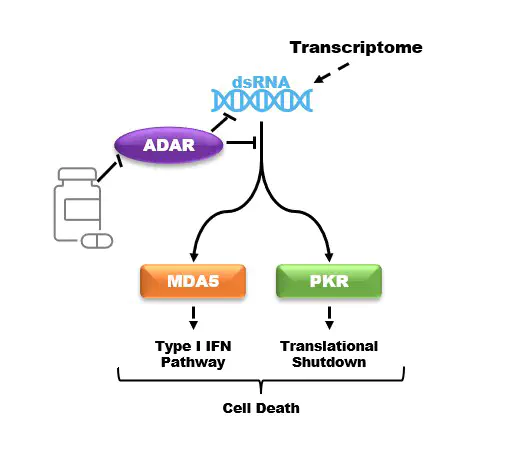Targeting ADAR to treat triple-negative breast cancer
 Project Summary
Project Summary
The goal of this project is to further explore ADAR-dependency in breast cancer and to identify small molecule inhibitors of ADAR. Previous work has shown that ADAR is a potential therapeutic target for TNBC (Kung, Cottrell, et al., 2021). Knockdown of ADAR in a subset of TNBC cell lines inhibits proliferation and tumorigenesis. Most cell lines that are dependent on ADAR expression exhibit elevated interferon stimulated gene (ISG) expression, thus making it possible to classify tumors that may respond to therapies targeting ADAR. While it is known that ADAR-dependent cell lines exhibit elevated ISG expression, the importance of elevated ISG expression for the phenotype is not clear. Additionally, it is not clear why there is no activation of PKR or the IFN pathway upon ADAR depletion in ADAR-independent cell lines. A better understanding of the mechanism of ADAR-dependency would allow more accurate classification of ADAR-dependent tumors to guide therapeutic intervention. Finally, identification of potent, selective ADAR inhibitors is needed to eventually move this concept from the bench to the bedside.
Aim 1: Utilize multiple approaches to identify the immunogenic RNAs that activate PKR or the IFN pathway following loss of ADAR. These approaches include immunoprecipitation of dsRNAs, or cross-linking immunoprecipitation (CLIP) of PKR or MDA5 interacting RNAs with or without ADAR knockdown.
Aim 2: To develop an accurate classifier for ADAR-dependence and evaluate the performance of the classifier on a panel of TNBC patient derived xenograft models.
Aim 3: Utilize a two-step screening process to identify small molecule inhibitors of ADAR. Subsequently we will test the ability of identified ADAR-inhibitors to inhibit growth of TNBC cell lines.